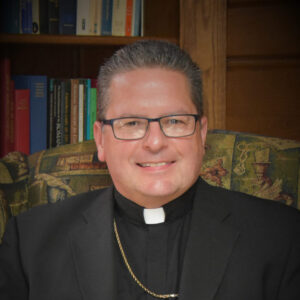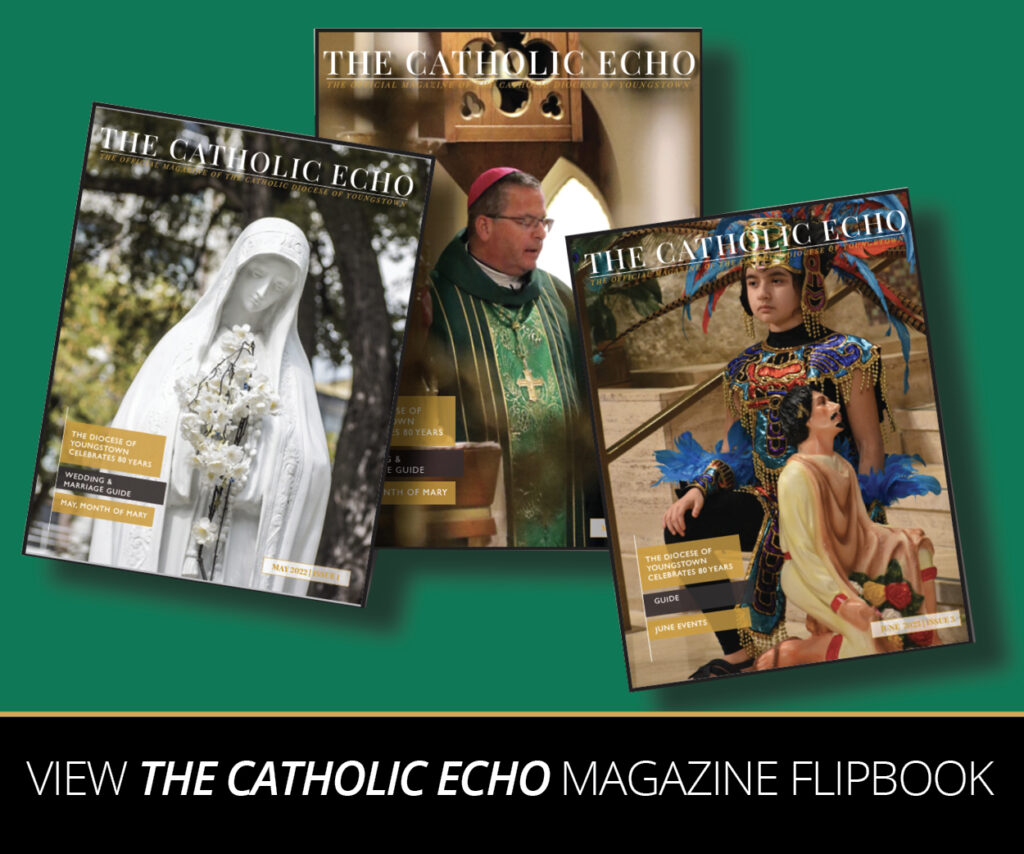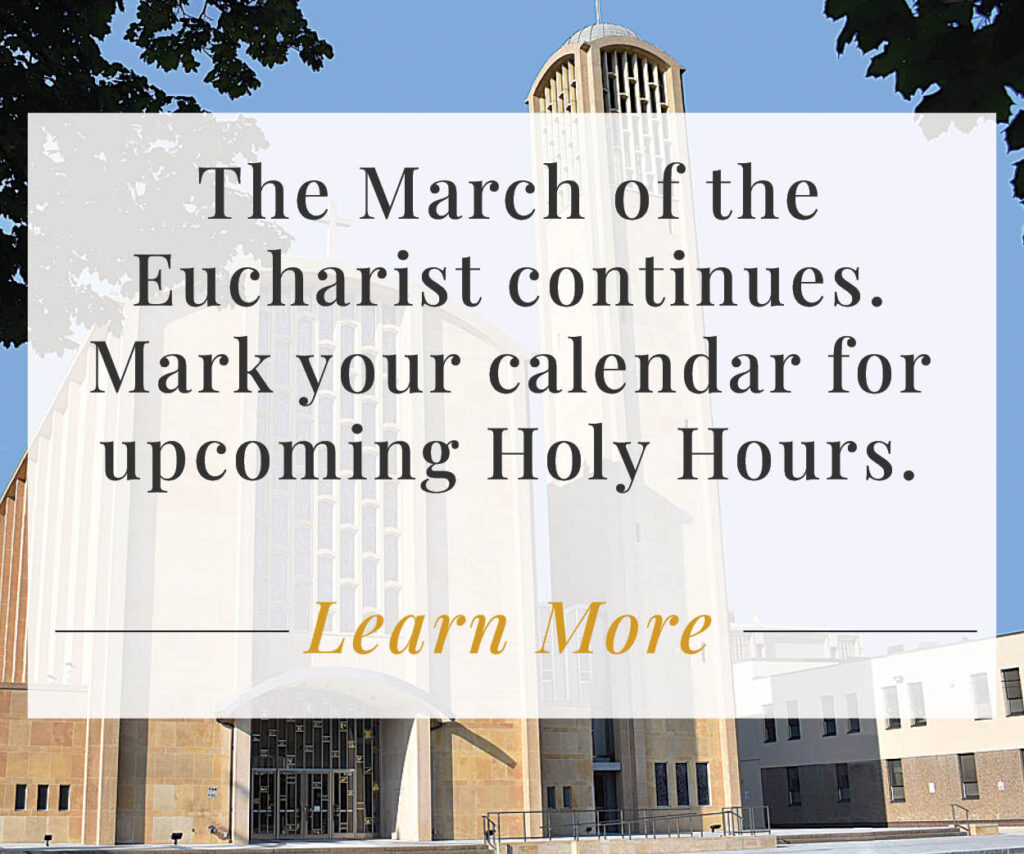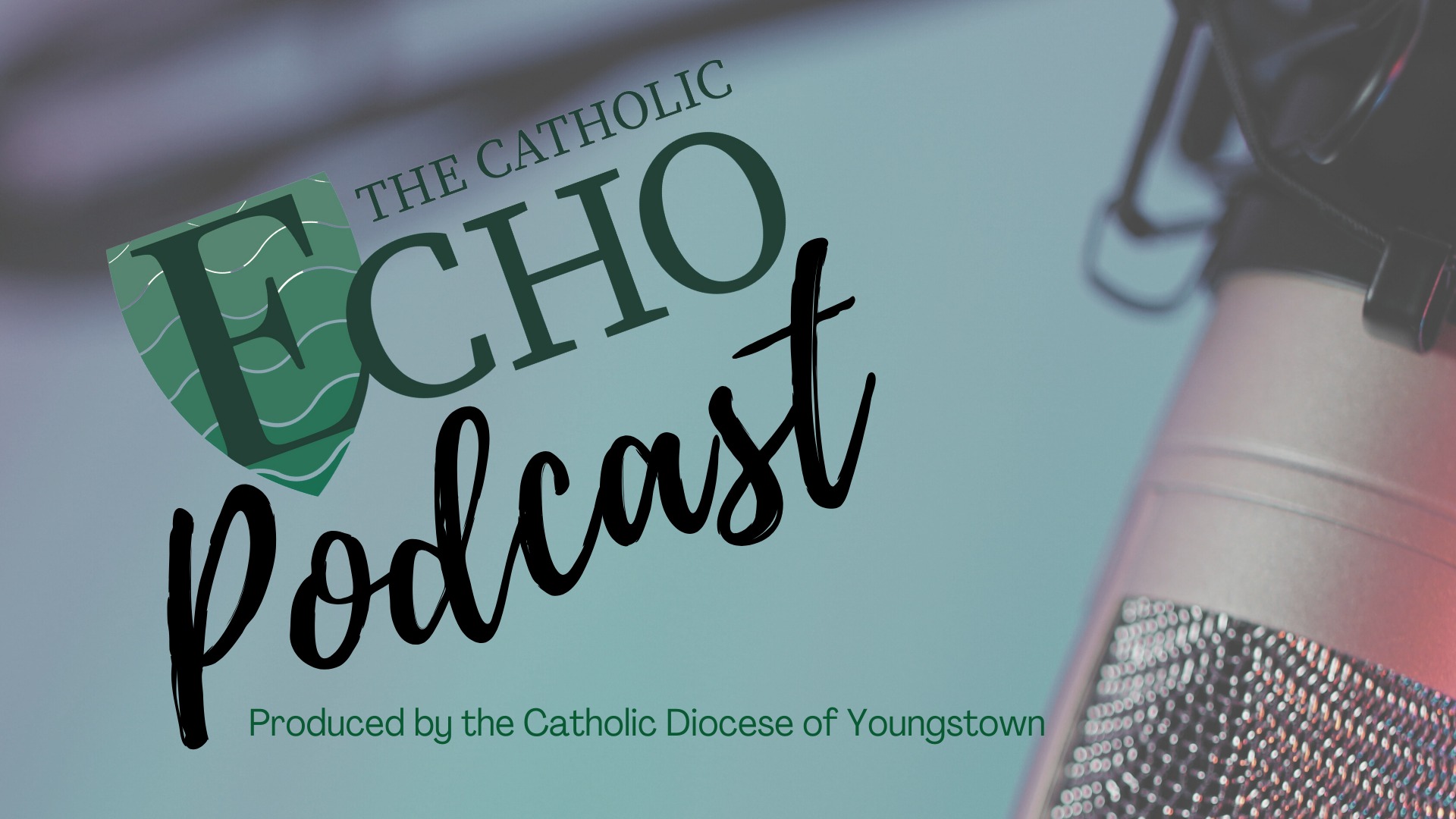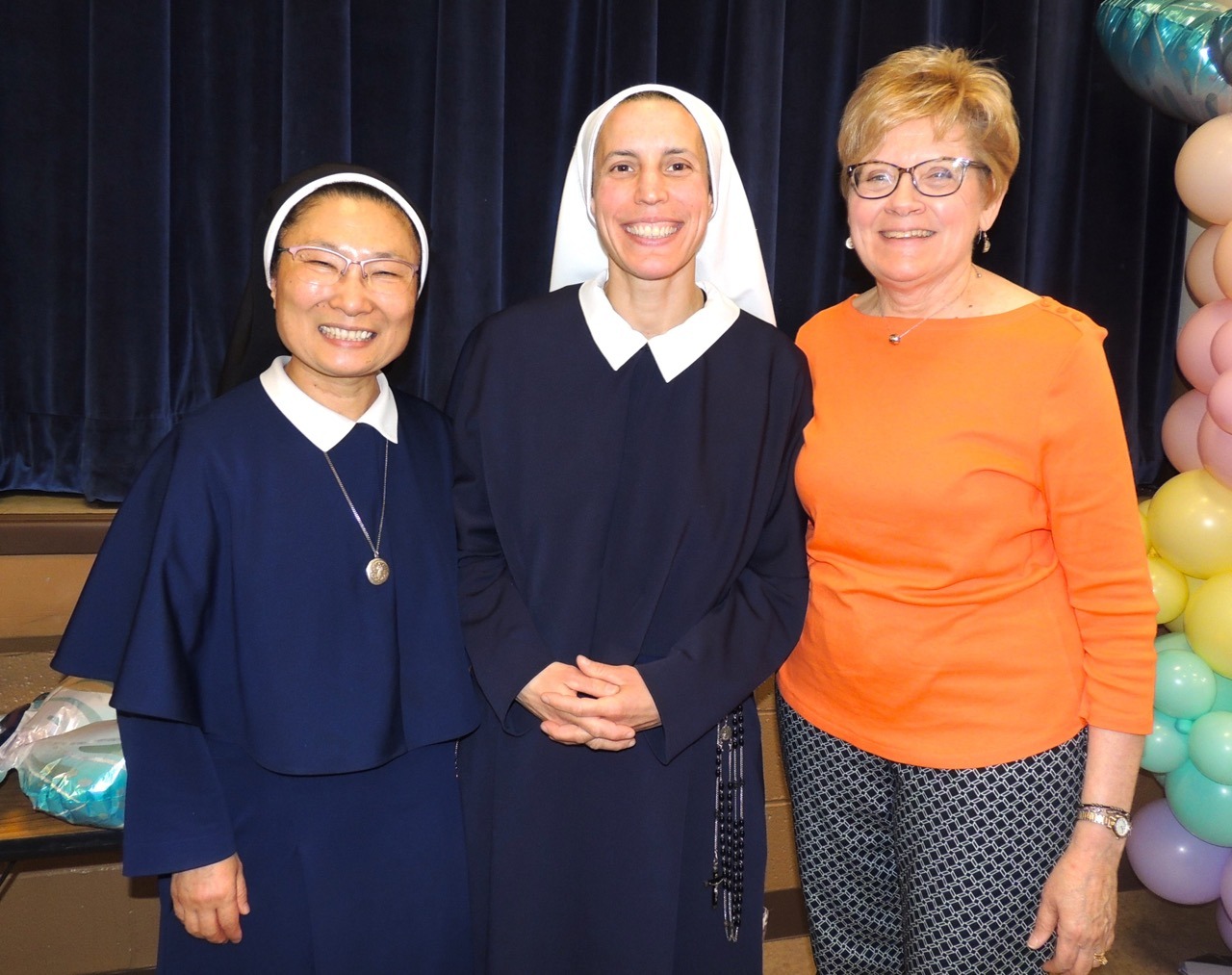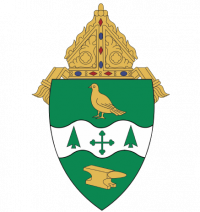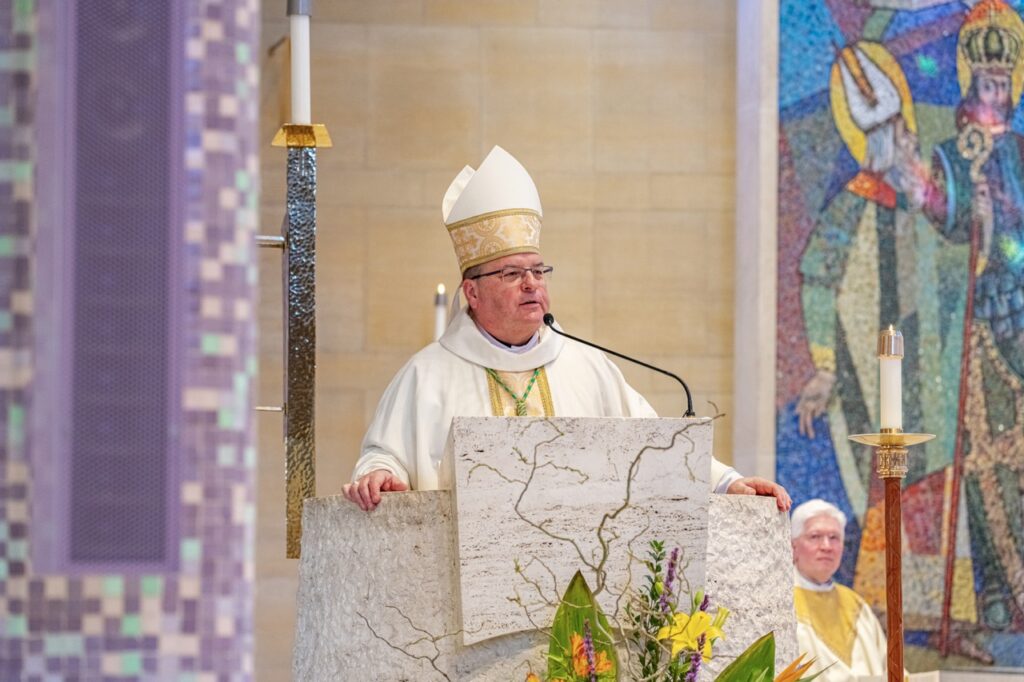
Imagine for just a moment a world without images. In as much as an image is defined as “a visual representation of something,” an imageless world would mean no pictures, prints, murals, statues or mosaics. It would mean no crucifix or cross. I cannot imagine sitting at my office desk without an image of my dear parents, who were my first teachers in the ways of the faith. Nor could I ever fathom not having an image of the crucifix before me or some representation of the Blessed Virgin Mary. Suffice it to say, a world without images would be an empty and dark world. Images have a way of inspiring, challenging and reassuring us.
With the recent renovations of the St. Columba Cathedral sanctuary, the image of the Blessed Mother on the mosaic, surrounded by the saints who represent the ancestral homes of the women and men who built the Diocese of Youngstown, is beautifully prominent. You can see that image on the cover of this magazine.
This powerful image of Mary has been traditionally called Our Lady of the Nations. When we enter the cathedral and gaze at this rendering of the Blessed Mother, it should remind us that Mary is a woman for all times, seasons and peoples. As she says in her great song of praise otherwise known as the Magnificat, “For he has looked upon his handmaid’s lowliness; behold, from now on will all ages call me blessed” (Luke 1:48). During the month of May, the Church shines the spotlight on the image of our Blessed Mother that manifests itself in a myriad of ways.
Some, especially those who pray at our cathedral, may be wondering what happened to the crucifix that once stood in front of the mosaic. After consultation with the company overseeing the redesign, it was recommended to remove the corkboard and the crucifix to allow the beauty of the mosaic to shine and tell the story of our diocese. We are a pilgrim people representing many nationalities aspiring to be one through the intercession of our Blessed Virgin Mary, Our Lady of the Nations.
But where is the crucifix in our story? Jesus remains at the center of our faith and worship. Like Saint Paul we say, “For ‘In him we live, and move and have our being’” (Acts 17:28). The crucifix, representing Christ’s love for us, is housed in the sanctuary at the cathedral. This image of our salvation is carried in procession to and from every major liturgy. As that cross leads us in procession to the altar, we are reminded not only of Christ’s love for us, but also of the crosses we carry in our own lives, which we now bring to God’s altar as part of our sacrifice. The cross of Jesus remains prominent to us during the entire Mass. At the conclusion of the Mass, that same processional cross leads us back out into the world to carry our own crosses and assist others with a renewed strength, thanks to God’s Word and Sacrament, along with the memorable image of the corpus of Jesus suffering and dying for us.
Any time we gaze at the cross or crucifix, we should find solace in Jesus’ love for us. In addition, we should be encouraged to behold the words of Jesus who says, “Whoever wishes to come after me must deny himself, take up his cross, and follow me” (Matthew 16:24).
Images are real and profound. It is hard to imagine living life without them. Through our baptism in Christ Jesus, we are called every day to be living images and sacred signs of His presence in the world. Even in our brokenness, when we smile, offer a kind word, an open hand and a loving heart, we can present a stunning rendering of Jesus. By saying “fiat” (let it be done) to what God asks of us or standing at the foot of someone’s cross, we can humbly replicate a glimpse of the image of Mary, the first disciple.
During this time, I encourage you to make a space for images of Jesus, Mary, the saints and your loved ones. Those images can mean so much. And let’s not dismiss or discount the powerful image that we can be for others.
Imagine por un momento un mundo sin imágenes. En la medida en que una imagen se define como “una representación visual de algo”, un mundo sin imágenes significaría que no habría fotografías, grabados, murales, estatuas o mosaicos. Significaría que no habría crucifijo ni cruz. No puedo imaginarme sentado en el escritorio de mi oficina sin una imagen de mis queridos padres, que fueron mis primeros maestros en el camino de la fe. Tampoco podría imaginarme sin una imagen del crucifijo ante mí o alguna representación de la Santísima Virgen María. Basta decir que un mundo sin imágenes sería un mundo vacío y oscuro. Las imágenes tienen una manera de inspirarnos, desafiarnos y tranquilizarnos.
Con las recientes renovaciones del santuario de la Catedral de San Columba, la imagen de la Santísima Madre en el mosaico rodeada por los santos que representan los hogares ancestrales de las mujeres y hombres que construyeron la Diócesis de Youngstown, está bellamente destacada. Pueden ver esa imagen en la portada de esta revista.
Esta poderosa imagen de María ha sido llamada tradicionalmente Nuestra Señora de las Naciones. Cuando entramos en la catedral y contemplamos esta representación de la Santísima Virgen, nos debería recordar que María es una mujer para todos los tiempos, estaciones y pueblos. Como ella dice en su gran canto de alabanza, conocido también como el Magnificat: “Porque se fijó en su humilde esclava, y desde ahora todas las generaciones me dirán feliz” (Lc 1, 48). Durante el mes de mayo, la Iglesia pone de relieve la imagen de la Santísima Virgen, que se manifiesta de múltiples maneras.
Algunos, especialmente los que rezan en nuestra catedral, se preguntarán qué ha pasado con el crucifijo que había delante del mosaico. Luego de consultar con la empresa que supervisó el rediseño, se recomendó retirar la pizarra de corcho y el crucifijo para permitir que la belleza del mosaico brillara y contara la historia de nuestra diócesis. Somos un pueblo peregrino que representa a muchas nacionalidades que aspiran a ser una por la intercesión de nuestra Santísima Virgen María, Nuestra Señora de las Naciones.
Pero, ¿dónde está el crucifijo en nuestra historia? Jesús sigue siendo el centro de nuestra fe y nuestro culto. Como San Pablo, decimos: “Pues en él vivimos, nos movemos y existimos” (Hch 17,28). El crucifijo, que representa el amor de Cristo por nosotros, se encuentra en el santuario de la catedral. Esta imagen de nuestra salvación es llevada en procesión hacia y desde cada liturgia importante. Cuando esa cruz nos conduce en procesión hasta el altar, no sólo se nos recuerda el amor de Cristo por nosotros, sino también las cruces que llevamos en nuestras propias vidas y que ahora traemos al altar de Dios como parte de nuestro sacrificio. La cruz de Jesús permanece prominente para nosotros durante toda la Misa. Al final de la Misa, esa misma cruz procesional nos lleva de vuelta al mundo para llevar nuestras propias cruces y ayudar a los demás con una fuerza renovada, gracias a la Palabra y al Sacramento de Dios, junto con la imagen memorable del cuerpo de Jesús sufriendo y muriendo por nosotros.
Cada vez que contemplamos la cruz o el crucifijo, deberíamos encontrar consuelo en el amor de Jesús por nosotros. Además, debemos ser alentados a contemplar las palabras de Jesús, que dice: “El que quiera asegurar su vida la perderá, pero el que sacrifique su vida por causa mía, la hallará” (Mateo 16, 25).
Las imágenes son reales y profundas. Es difícil imaginar vivir una vida sin ellas. A través de nuestro bautismo en Cristo Jesús, estamos llamados cada día a ser las imágenes vivas y las señales sagradas de su presencia en el mundo. Incluso en nuestro quebranto, cuando sonreímos, ofrecemos una palabra amable, una mano abierta y un corazón amoroso, podemos presentar una impresionante representación de Jesús. Al decir “fiat” (hágase) a lo que Dios nos pide o al ponernos al pie de la cruz de alguien, podemos reproducir humildemente un destello de la imagen de María, la primera discípula.
Durante este tiempo, los animo a que hagan un espacio para las imágenes de Jesús, María, los santos y sus seres queridos. Esas imágenes pueden significar tanto. Y no desestimemos ni descartemos la poderosa imagen que podemos ser para los demás.

